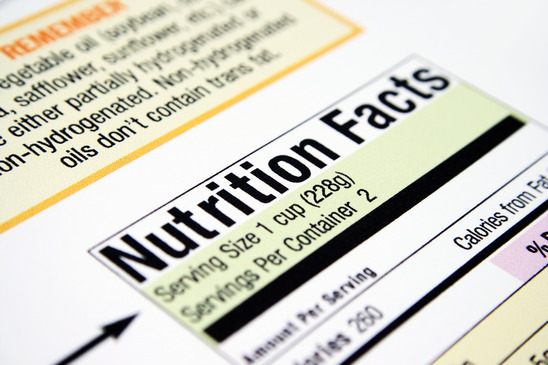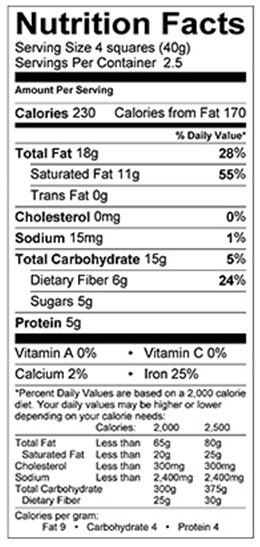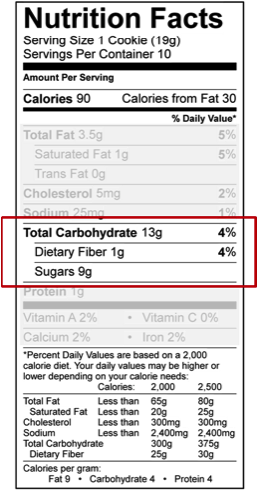The number of food additives and preservatives as well as natural ingredients is huge and it’s not surprising that reading label and understanding their content has become a challenge. However, it’s worth knowing some general rules to avoid buying too much processed and low value products.
Nowadays, sugar is present not only in sweet foods like cakes or candies. It’s added to spicy sauces and meats as it adds flavour and moisture but also acts as preservative. More about added sugar in our diet can be found here (How much sugar per day?) and it seems that we should avoid any foods that contain added sugar. To do so, we need to know where the sugars are hidden.
There are two types of sugars present in foods – natural ones and added. Natural ones are present in the products made with the use of either fruit or milk. Otherwise, the sugars in the Nutrition Facts table will be coming from added sugars only such as sucrose, high fructose corn syrup etc. (the list is below).
How to read the labels?
Any product you buy will have two types of information — Ingredients list and Nutrition Facts table.
First you should read the Ingredients list to know what was used to produce it.
While reading the Ingredients list, remember that all ingredients are listed in descending order by weight. So those that weight the most will be listed first. If any sugars were added to the product, they must be listed. The ingredients must be listed by common or usual name so sugar will mean table sugar, liquid sugar, invert sugar or sucrose. If the product has sugar mentioned as one of the first three ingredients, it means that it is processed and modified food and better not to eat it as long as you want to keep healthy and fit.
There might be more than one type of sugar e.g. honey, invert sugar and maple syrup, all of them in small quantities so on much further positions of the list. However, when they add up it may be a considerable amount so do the math.
Sometimes producers will add more “healthy” sweet choices such as honey or organic cane juice. These are all sugars so be careful.
Another way to pack the product with sugar and keep it more appealing is using an adjective “natural”. Natural sugar means simply sugar as it is derived from natural source – sugar cane or beet root. However, it doesn’t change the fact that it still is sugar.
Here is the list of many sweet ingredients that may appear in the ingredients list:
Agave nectar
Barley malt syrup
Brown sugar
Coconut palm sugar
Evaporated cane juice
Fructose
Galactose
Glucose
Golden syrup
High-fructose corn syrup
Honey
Invert sugar
Lactose
Maltodextrin
Maltose
Maple syrup
Molasses
Raw sugar
Starch
Sucrose
The above list includes natural sugars, natural sweeteners, modified sugars, and complex sugars (read more about them here). Additionally, the product may contain artificial sweeteners, so-called non-nutritive sweeteners.
The next step is to read the Nutrition Facts table.
The Nutrition Facts table gives you information on serving size, amount of nutrients in the food and how much nutrient is provided in comparison to your daily need (it’s given in percentage).
In Nutrition Facts table natural and added sugars are given as sum. There is no distinguishing between those two types. So, if the product is made from fruit or milk it will have natural sugar. But if there was any sugar added in form of eg. high fructose corn sugar, all sugars will be added up and given as one number. It is very difficult to tell how much added sugar the product has.
In the example below the fruit cocktail is made of fruit so the sugars in Nutrition Facts table will come from fruit. However, there is also added sugar such as glucose-fructose (by the way, glucose-fructose is just sucrose, so in other words table sugar). The amount of sugars given in Nutrition Facts table which is 30g is a sum of sugars originating from concentrated fruit juices and glucose-fructose.
Source: http://pepsico.ca/
As mentioned before, the ingredients are listed in descending order by weight so in the above label we can see that there is more glucose-fructose than concentrated fruit juice which makes this drink more a soda than a fruit drink. Careful — soda is soda (carbonated crap drink).
How to interpret the amounts?
It is good to follow these simple rules while referring to the labels:
- If the product has more than 22.5 g of total sugars in 100 g of serving size, it’s considered high sugar level.
- If the product has 5 g or less of total sugars in 100 g of serving size, it’s considered low sugar level.
- If the product between 5 g and 22.5 g of total sugars in 100 g of serving size, it’s considered medium sugar level.
- Products with medium and high sugar level should be eaten sparingly.
Different terms that you may find on the products that refer to sugar content
| Sugar-free / Free of sugar / No sugar / 0 sugar / zero sugar /without sugar / contains no sugar / sugarless | The product contains less than 0.5 g of sugar per serving. |
| Reduced in sugar / Sugar-reduced / Lower sugar / lower in sugar | The product has at least 25% less sugars per serving if compared to not modified product with the same serving size. |
| No added sugar / no sugar added / Without added sugar | The product has neither added sugar nor ingredients containing added sugars. |
| Unsweetened | Same as “no added sugar” category and contains no sweeteners |
| Low in sugar | Not defined or allowed as a claim on food labels |
| Light | Not defined or allowed as a claim on food labels |
| Low carbohydrate | Not defined or allowed as a claim on food labels |
| Carbohydrate-reduced | Not defined or allowed as a claim on food labels |
| Source of complex carbohydrate | Not defined or allowed as a claim on food labels |
General information on labels
Serving size
Serving size is standardized to make it easy to compare different foods. It may be given in familiar units such as cups, pieces or cookies like in the label on the right, followed by the metric amount such as number of grams or milliliters. All the information below such as energy, proteins, fat will refer to the serving size. If you have more than one serving (e.g. two cookies) you need to multiply the nutrition intake by two.
% Daily Value
There is couple of different terms:
Daily Reference Values (DRVs)
DRVs are established for adults and children four or more years of age, as are RDIs, with the exception of protein. DRVs are provided for total fat, saturated fat, cholesterol, total carbohydrate, dietary fiber, sodium, potassium, and protein.
Reference Daily Intakes (RDIs)
RDIs are provided for vitamins and minerals and for protein for children less than four years of age and for pregnant and lactating women.
However, in order to limit consumer confusion, the label includes a single term (i.e., Daily Value (DV)), to designate both the DRVs and RDIs. Specifically, the label includes the % DV, except that the % DV for protein is not required unless a protein claim is made for the product or if the product is to be used by infants or children under four years of age.
US FDA gives the daily values for adults and children four or more years of age based on 2000 calorie diets. However, the list does not include sugars but only carbohydrates and fibre.
| Food Component | %DV |
| Total Carbohydrate | 300 g |
| Dietary Fibre | 25 g |
As we wrote it earlier here (How much sugar per day?) the amount of sugar should be no more than 25g.
- All the information here refers to product as packed and not prepared so e.g. it refers to raw grain or rice and not cooked.
- Carbohydrates include sugars and dietary fiber. Sugars are all free monosaccharides and disaccharides naturally occurring in product or added.
- DV is calculated based on 2000 or 2500 calorie diet.
When may a “high” or a “good source” claim be made?
A “good source” claim may be made when a food contains 10-19% of the % Daily Value (%DV).
A “high” claim may be made when a food contains at least 20% of the %DV.
Source:
http://www.fda.gov/



